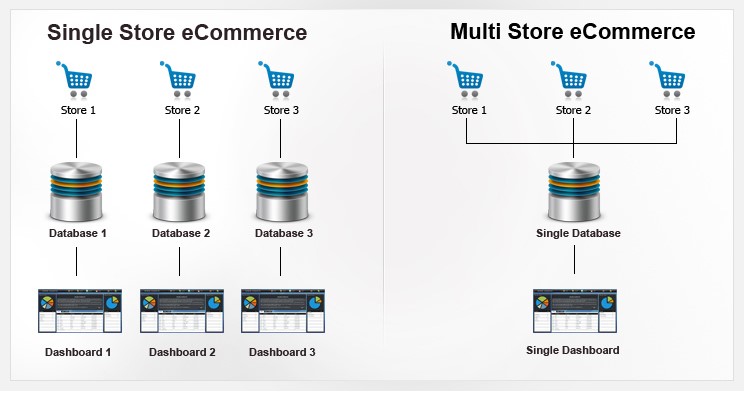
You know about a single e-commerce store.
But do you know what a multi-store is?
…and how it differs from a single store?
Before we drill down on the differences let’s understand what a multi-store is.
A multi-store is:
Several stores sharing one or several parts of the cart system.
Or
Several stores on one domain
Or
Several independent stores (with different domains, skin, shipping, etc.) sharing a common shopping cart
Or
Multi-vendor shopping cart.
You now the basic idea about multi-store. Let’s compare it against a single store. That will help your grasp the fine points, quick and easy. Take a glance at the comparison table.
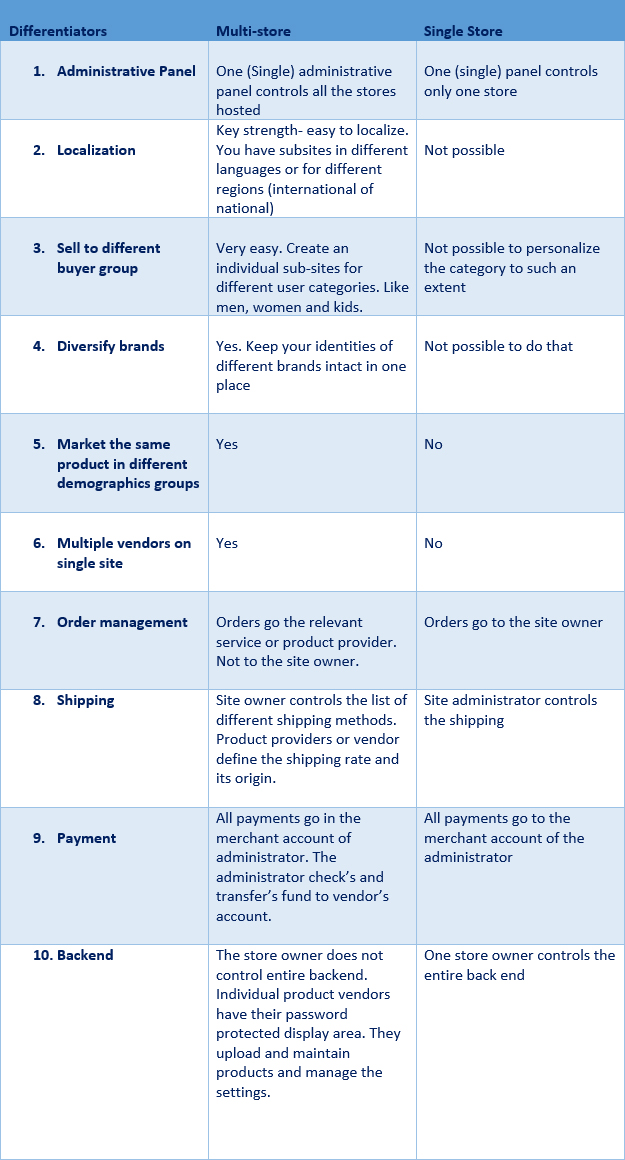
- Administrative panel:
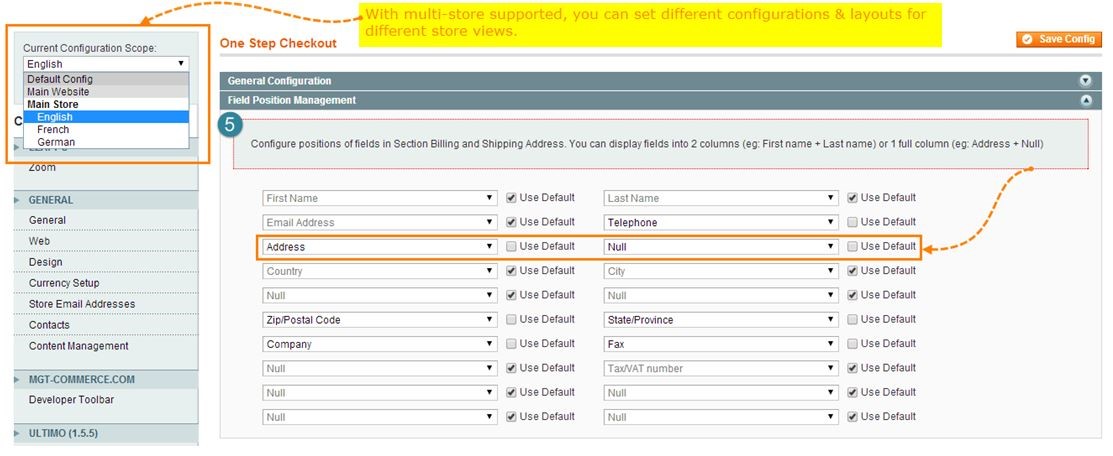
- Multi-store:
As a site owner, you control all the stores/shops/niche hosted.
In a multi-vendor site, you control the backend. But not product display and its settings. Individual vendors do that through their password protected, account. They can update as and when needed.
- Single Store:
You control the all the settings, front-end, and back-end through the administrative panel.
- Localization:
- Multi-store:
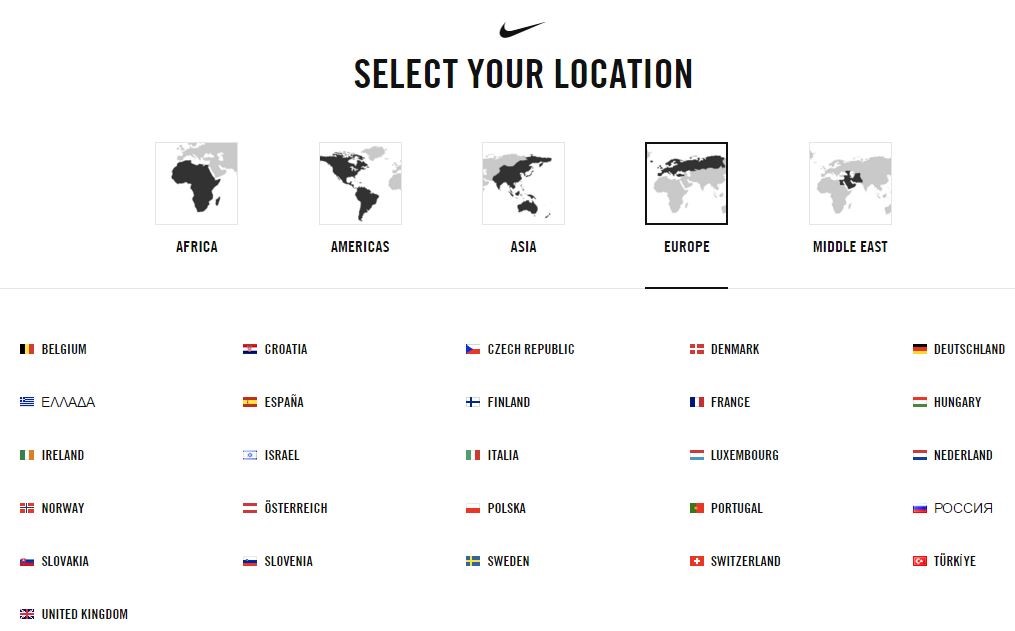
Get local and go global. To catch global audience your store should speak the language of local customers.
In a multi-store you can set-up different stores in different languages for different countries. You can do in on same domain. You have one store in different languages.
Customers from different countries can see their products in their local language. They bond better with your multi-store.
- Single Store:
You have to set-up different stores in different languages with different domains. That is an expensive proposition and not a workable option. In the nutshell, you cannot localize if you want to go global.
- Sell Different Buyer Groups:
- Multi-store:
You can target different categories of your customers- men, women, and children. Customize the skins of different stores as per your target audience. That is easy to do.
You can create and align different stores according to user categories. Add as many as stores you want. You have superstore!
See below two screenshots of Asos.
Click on the women and men categories and go to the respective stores.
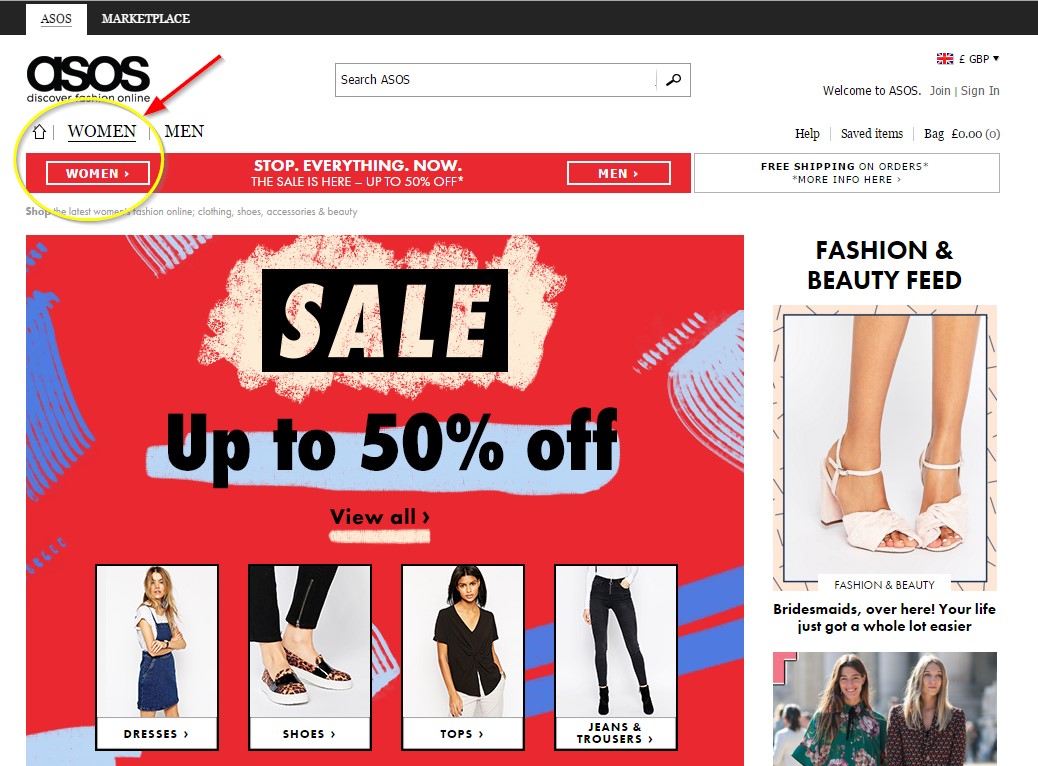
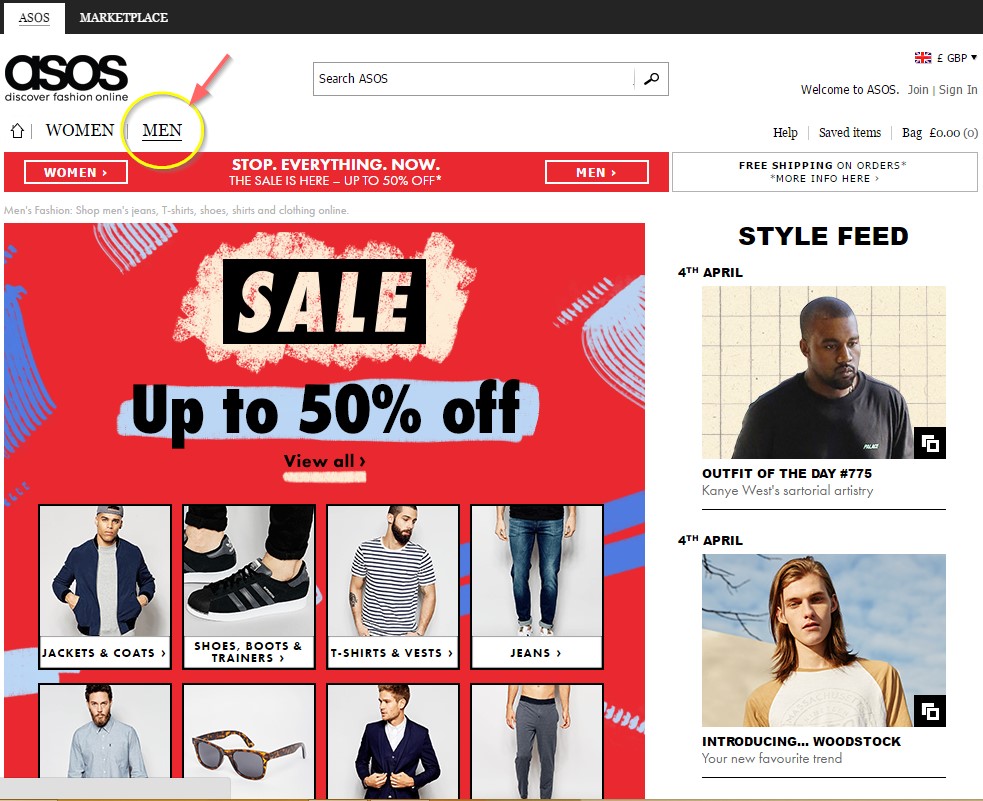
- Single Store:
You cannot create, clear and broad user categories. You cannot target different user categories and drive more useful traffic to the store.
- Diversify Brand:
- Multi-store:
You have many brands and want to preserve intact their diversity. Multi-store is a great way to do that.
Create different stores according to your different brands. Customize the look and feel.
Brands have their loyal followers. Pull yours to your different branded stores and enjoy growing sales. Multi-store takes your branding to new levels.
- Single Store:
You can create a drop down menu that has your different brands. You cannot dedicate a complete subsite customized to a particular brand. That is where the single store loses to a multi-store when it comes to hosting many brands.
- Market the same product in different countries:
Host many subsites on the same domain. Change the language as per your audience. Keep the look and feel of subsites same. You localize and internalize at the same time.
You have customers from different countries for your same product or brand.
a. Forever living website in German language
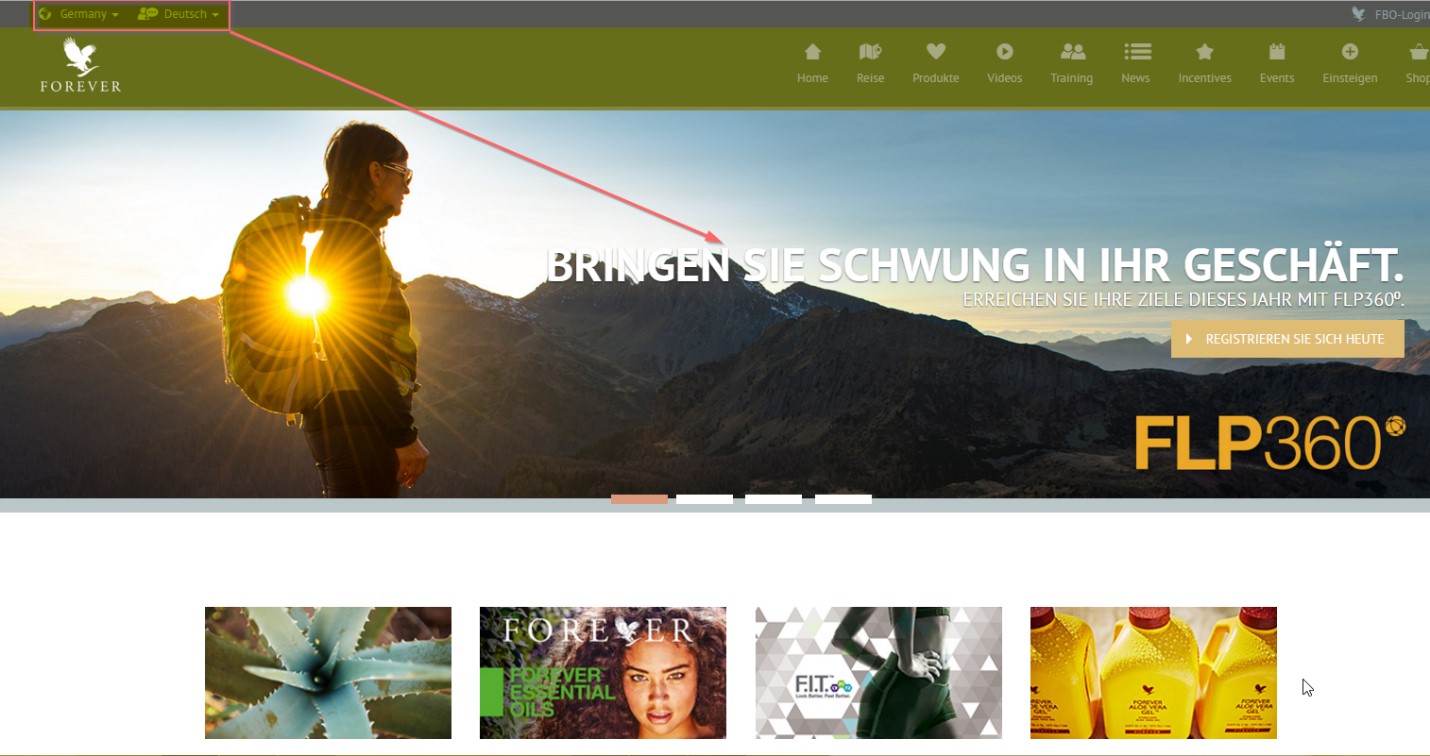
a. Forever living website in Turkish language
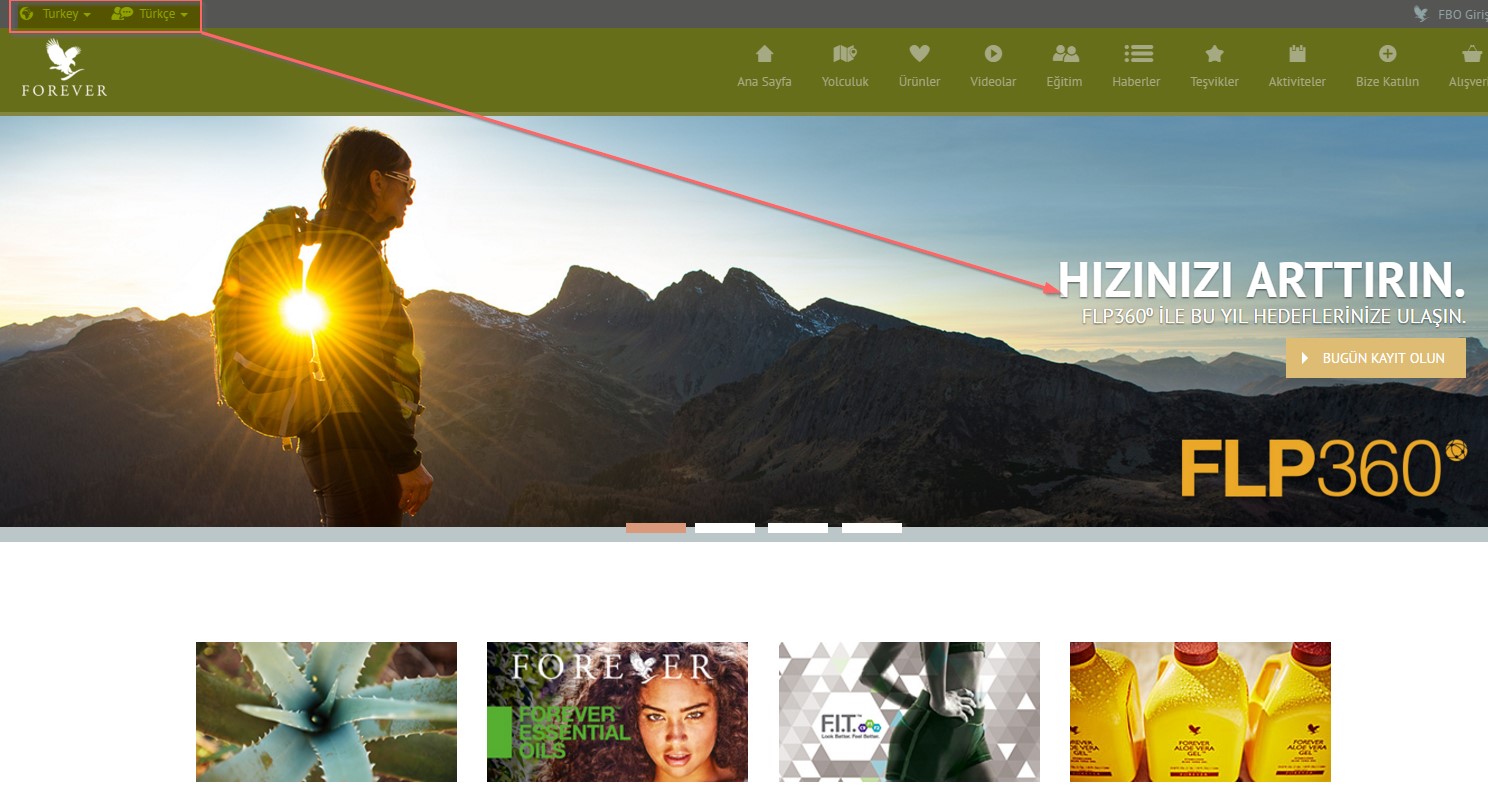
- Single Store:
One language per website. If you want to target 10 countries then you have to create 10 different stores on different domains. It is as simple as that. Not a good idea at all.
Who wins?
Multi-store.
- Multiple vendors on same website:
- Multi-store:
As a site owner, you allow many vendors to rent space on your website for their products/services. Amazon does that. See below two different screenshots of different vendors hosted on Amazon:
The first screenshot is storefront of the vendor ELMI that deals in lab equipment.
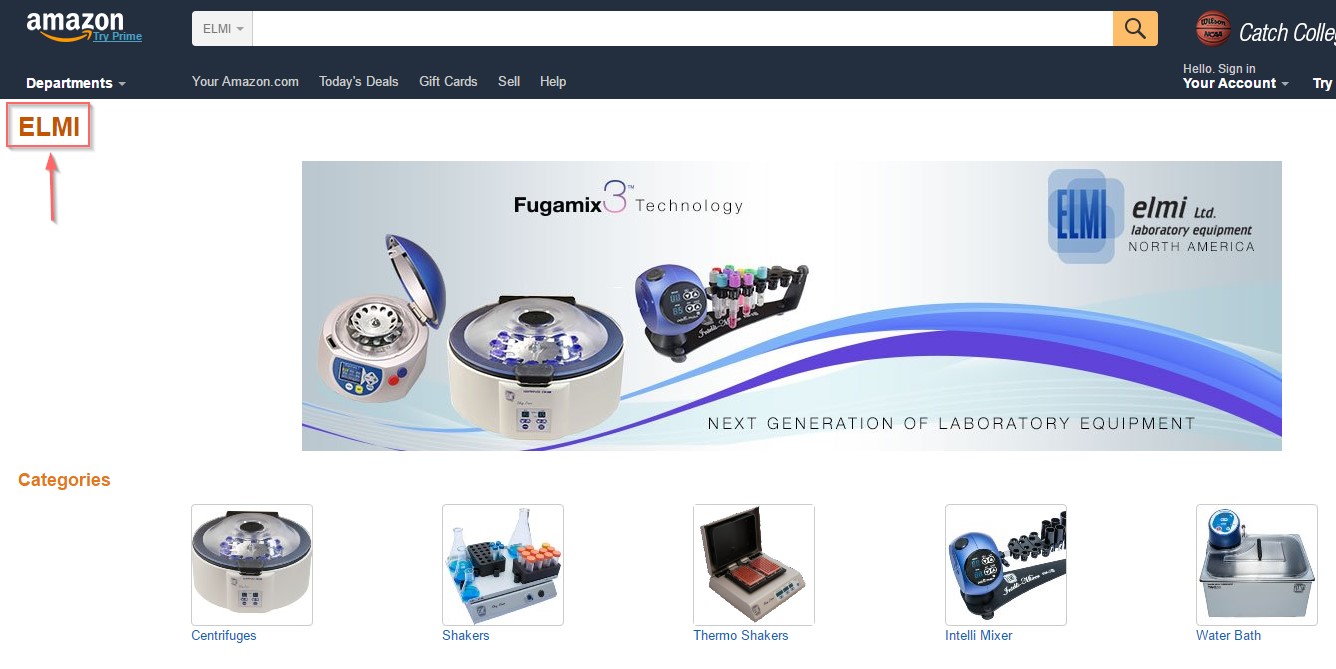
The second screenshot of another vendor, Stamina, manufacturer of fitness equipment.
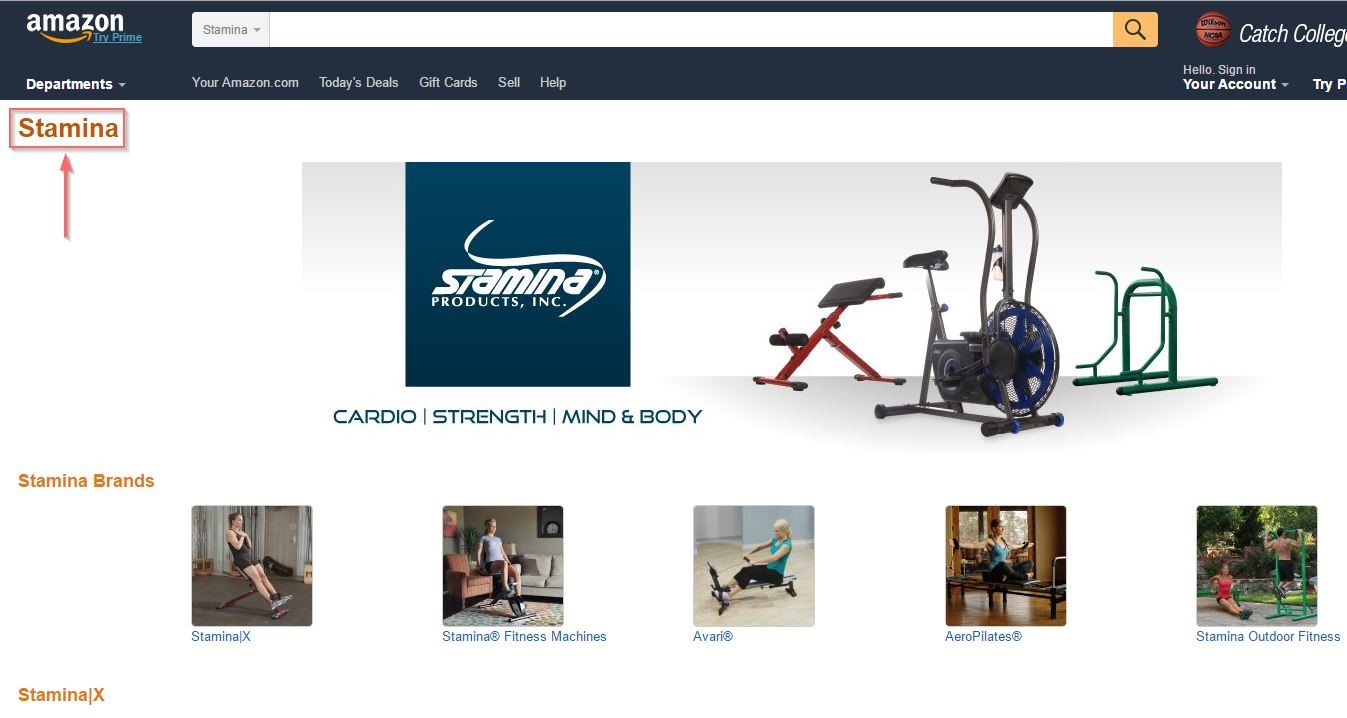
Both of them are hosted on Amazon.
…And there are thousands others.
- Single-store:
Multivendor hosting is not possible. The reason is the lack of scalable website architecture like in a multi-store.
- Order Management:
- Multi-store:
The vendors get their orders in the account. The site owner plays no role here. Order management is the sole responsibility of the vendors.
- Single-store:
The site owner takes care of the customer orders. He or she then routes it to right department for further action.
- Shipping:
- Multi-store:
Site owner controls list of different shipping methods. Product providers or vendor define the shipping rate and its origin.
- Single-store:
Site administrator completely controls the shipping.
- Payment:
- Multi-store:
All payments go in the merchant account administrator. The administrator check’s and transfer’s fund to vendor account.
- Single-store:
All payments go to the merchant account of the administrator
- Backend:
- Multi-store:
The store owner does not control entire backend. Individual Product vendors have their password protected display area. They upload and maintain products and manage the settings.
- Single-store:
The store owner controls the entire back end.
Multi-store has a complex but scalable architecture. Hence, it is easy to host many stores, customized to the target audience.
So go multi-store; go global. You have ten reasons for that. Let your business speak to your international audience and you sit back and reap the rewards.